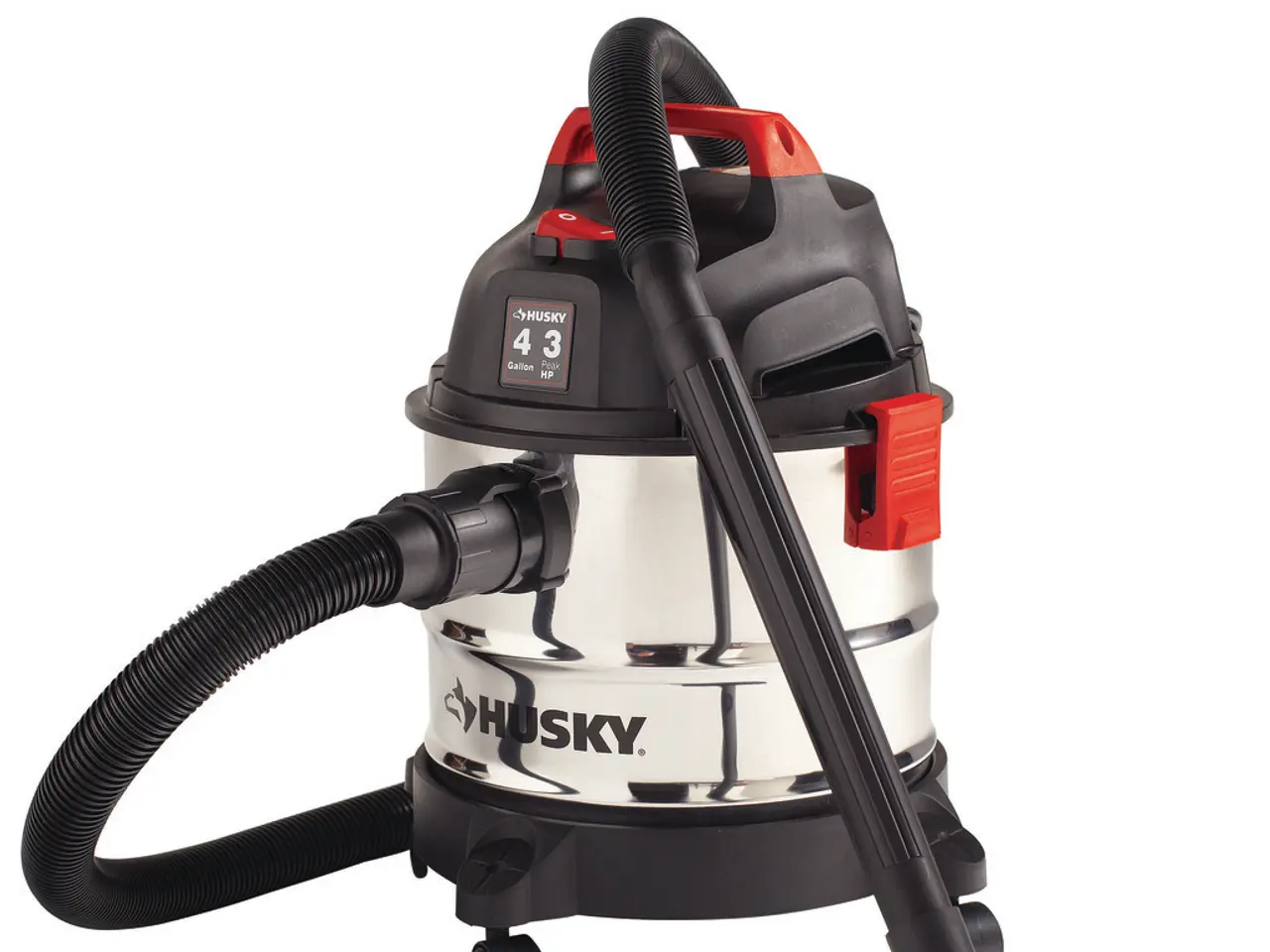Tips for Maximizing Industrial Air Compressor Efficiency for Optimal Functioning!
In the world of industrial operations, maintaining the health of air compressors is crucial for consistent productivity, energy efficiency, and overall cost savings. Neglecting regular maintenance can lead to a host of issues, including reduced efficiency, increased energy costs, and even safety hazards.
To ensure efficient and reliable operation, there are several key practices to follow. Daily maintenance includes listening for abnormal noise or vibration, monitoring pressure and temperature readings, checking oil level (for oil-lubricated models), draining moisture from receiver tanks and filters, and inspecting air filters.
Weekly maintenance involves more in-depth checks. This includes cleaning air filters, checking for visible oil or air leaks, verifying belt tension and alignment, confirming emergency stop and alarms are functional, and inspecting belts and couplings for wear or looseness.
Annually, or every 2,000-4,000 hours, more extensive maintenance is required. This includes replacing oil and oil filters, replacing separator elements, performing vibration and thermal imaging analysis, inspecting and recalibrating controls and sensors, and conducting a full energy audit with Atlas Copco service partner.
Preventive maintenance is key to consistent performance and lower operating costs. By following these practices, you can avoid common mistakes such as neglecting daily checks, skipping scheduled maintenance, not addressing leaks or abnormalities, and failing to perform regular energy audits.
Industrial air compressors are complex machines, consisting of mechanical compression elements supported by filtration, cooling, lubrication, and control systems. Key components include the compressor element (piston, screw, or impeller), inlet filter, motor, storage tank, intercoolers/aftercoolers, lubrication system, and control and safety valves.
For optimized energy efficiency, it is crucial to use variable speed drives (VSD), properly size compressors according to demand, fix leaks in the distribution system, and recover heat from compressor cooling systems.
In terms of compressor types, reciprocating (piston) compressors are widely used and may be single or two-stage, often water-cooled for continuous duty and reliability. Rotary screw compressors offer continuous operation with lower maintenance needs. Two-stage compressors with intercoolers provide better efficiency in typical industrial pressure ranges (~100 psi).
In summary, industrial air compressors require routine maintenance of their components to ensure longevity, performance, and safety. Regular checks, cleaning, and replacement of filters, belts, and oil, as well as monitoring of pressure, temperature, vibration, and noise levels, are essential for efficient and reliable operation. By adhering to these practices, you can ensure your industrial air compressor delivers consistent productivity, energy efficiency, regulatory compliance, a longer equipment lifespan, and reduced total cost of ownership (TCO).
Atlas Copco USA service programs cover elements such as compressed air filters, separators, coolers, electrical systems, lubrication, drains, and controllers. Monthly maintenance includes cleaning coolers (especially in dusty environments), testing the condensate drain valve, inspecting pressure relief valves, checking for signs of corrosion or wear on components, and troubleshooting low pressure output, overheating, and noisy operations.
In the context of the industrial operations and maintenance of air compressors, ensuring logistics in procuring necessary parts and materials for regular maintenance is crucial for consistent productivity and performance. Neglecting such logistics can lead to delays, inefficient maintenance, and potentially compromised safety.
During the financial planning of the manufacturing industry, allocating budget for preventive maintenance of equipment, including air compressors, should be considered as an investment towards long-term energy savings, increased uptime, and overall operational efficiency.




